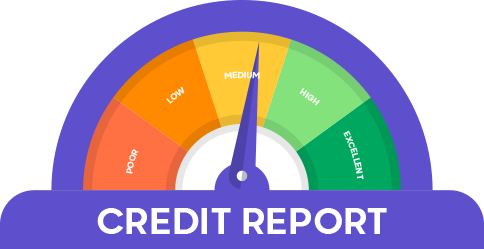Navigating the World of Personal Loans: A Comprehensive Guide
Date: 16-01-2024

Personal loans can be a valuable financial tool, helping you cover expenses such as education, debt consolidation, or major purchases.
However, before taking out a loan, it's essential to understand the process, risks, and best practices to ensure informed borrowing decisions.
This guide will provide insights into the fundamentals of personal loans and practical steps to navigate the borrowing process effectively.
Key Takeaways:
- Understanding different types of personal loans.
- Assessing your borrowing needs and repayment capacity.
- Finding the right lender.
- Effective debt management strategies.
- Avoiding common loan pitfalls, including scams and hidden fees.
Understanding Personal Loans
A personal loan is a lump sum borrowed from a lender that is repaid with interest over a fixed period. These loans are typically unsecured, meaning they don't require collateral. Instead, approval is based on factors like credit history and income.
Pros and Cons of Personal Loans
Pros:
- Fixed monthly payments.
- No collateral required.
- Flexible loan terms.
Cons:
- Higher interest rates than secured loans.
- Potential prepayment and late payment fees.
- Not ideal for long-term borrowing.
Choosing the Right Loan
To find the best loan for your needs, compare options based on:
- Interest rates
- Repayment terms
- Fees and charges
Online loan calculators and comparison tools can help you make an informed decision. Always research lenders and speak with them to understand their offerings before committing.
Assessing Your Borrowing Needs
Before applying for a personal loan, evaluate your financial goals and repayment capability. Consider:
- Loan purpose: Debt consolidation, home improvement, education, etc.
- Repayment ability: Assess your income, expenses, and existing financial obligations.
- Loan amount: Borrow only what you need to minimize interest costs.
Factors to Consider Before Applying
- Your Credit Score: Your credit score influences loan approval and interest rates. A higher score can get you better terms.
Tip: If your score is low, improve it by paying off existing debts and maintaining timely bill payments. - Interest Rates: Compare interest rates from multiple lenders to secure the most affordable option.
- Loan Terms: Shorter repayment periods lead to higher monthly payments but lower overall interest costs, while longer terms offer lower monthly payments but higher interest costs.
- Additional Fees: Watch out for origination fees, prepayment penalties, and late payment fees that can increase your loan cost.
Tip: Always read the fine print and clarify fees with your lender before signing.
Finding the Right Lender
Lenders vary in terms of loan offerings and customer service. Here's a comparison of different lender types:
Traditional Banks
- Pros: Lower interest rates for good credit borrowers.
- Cons: Stricter eligibility; slow approval process.
Credit Unions
- Pros: Lower fees; more flexible credit assessments.
- Cons: Membership may be required; limited loan options.
Online Lenders
- Pros: Quick application process; accessible for bad credit borrowers.
- Cons: Higher interest rates; potential hidden fees.
Tip: Choose reputable lenders with transparent terms and good customer service reviews.
Applying for a Personal Loan
- Check Eligibility: Ensure you meet the lender's minimum requirements, such as age, income, and credit score.
- Gather Required Documents: Prepare identity proof, income proof, and address proof.
- Submit an Application: Complete the online or paper application with accurate information.
- Review Loan Offers: Once approved, carefully review loan terms before accepting.
Avoiding Common Loan Pitfalls
- Not reading the fine print.
- Accepting the first loan offer without comparison.
- Providing inaccurate information on the application.
Managing Personal Loan Debt
- Budgeting Strategies: Create a budget to track expenses and allocate funds for loan repayment.
- Repayment Options: Consider refinancing or debt consolidation if repayment becomes challenging.
- Avoiding Default: Set up automatic payments and contact your lender if facing financial difficulties.
Conclusion
Personal loans can be a powerful financial tool when used wisely. By understanding different loan types, assessing your needs, comparing lenders, and managing debt responsibly, you can make informed borrowing decisions and achieve your financial goals.
Frequently Asked Questions (FAQs)
- What are personal loans? Personal loans are unsecured loans used for various purposes, such as debt consolidation, home improvements, or emergency expenses.
- How do personal loans work? Borrowers receive a lump sum and repay it over a fixed period with interest in monthly installments.
- How can I determine my borrowing needs? Assess your financial goals, repayment ability, and loan amount requirements before applying.
- How do I find the best lender? Compare banks, credit unions, and online lenders based on interest rates, fees, and customer reviews.
By following this guide, you can navigate the world of personal loans with confidence and make smart financial decisions.
